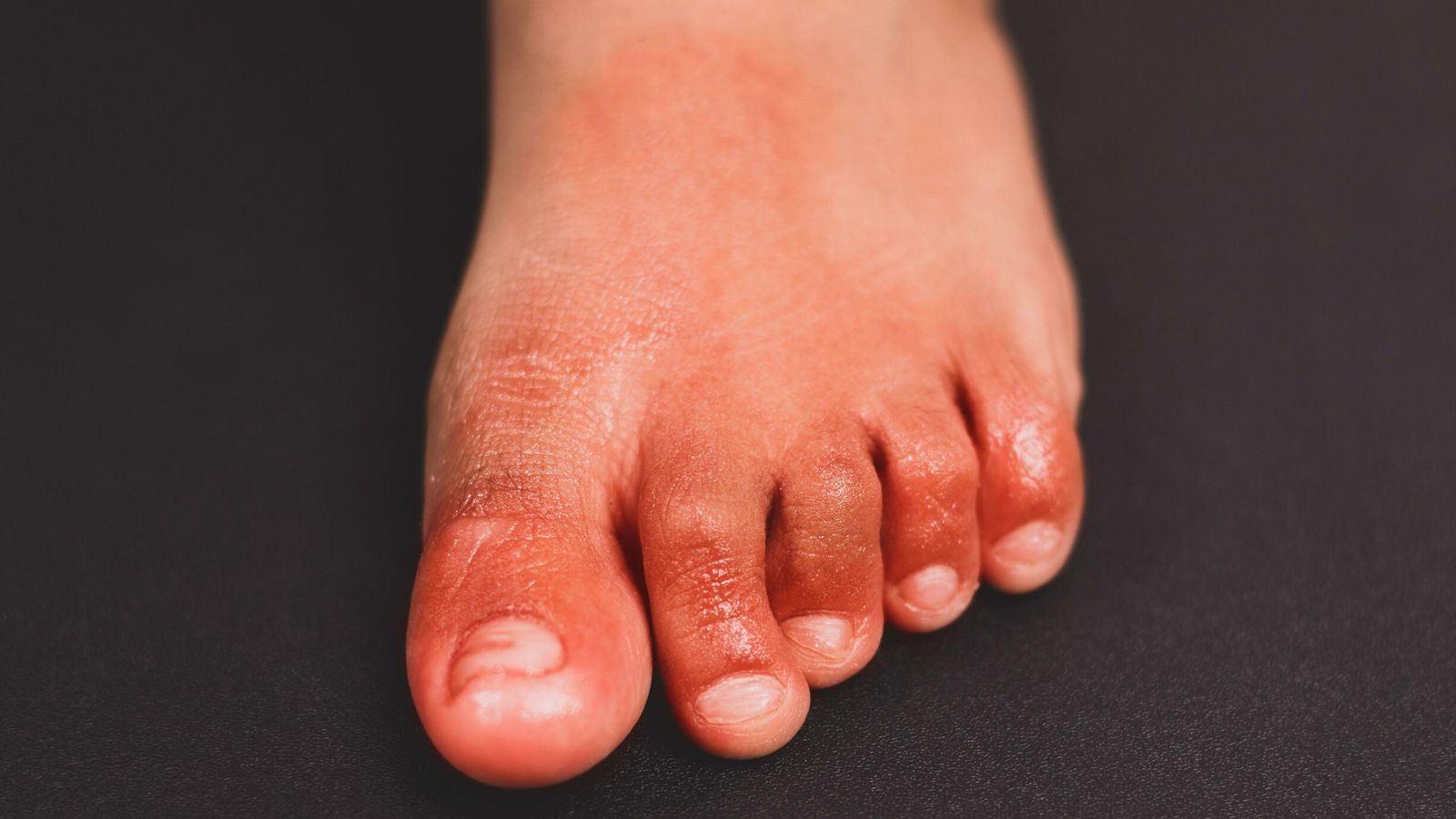A skin condition known as COVID toes – which results in inflammation and redness on the hands and feet – could be a side effect of the immune system’s response to the virus, a new study has found.
The symptom usually develops within one to four weeks of being infected and can result in fingers and toes becoming swollen or changing colour.
While some see symptoms disappear after just days, the condition can last for months at a time, and it was first linked to the virus in December last year.
Follow the Daily podcast on Apple Podcasts, Google Podcasts, Spotify, Spreaker
Researchers behind the study – which has been published in the British Journal of Dermatology – looked at 50 participants with COVID toes and 13 with similar chilblains lesions that arose before the pandemic.
They discovered two parts of the immune system may be responsible for why the symptoms appear as the body fights off the virus.
One is an anti-viral protein, called type 1 interferon and the other is an antibody that mistakenly targets and reacts with a person’s own cells and tissues, as well as the invading virus.
COVID-19: UK has little ‘headroom’ for coronavirus cases to surge before NHS ‘heavily stressed’, professor warns
COVID-19: UK records 33,869 new cases and 166 more coronavirus-related deaths, daily figures show
COVID-19: Over 100,000 children out of school with confirmed coronavirus last week
Cells lining blood vessels that supply the affected area also appear to play a critical role in the development of COVID toes and chilblains.
The senior author of the study, Dr Charles Cassius, said the research provided a deeper understanding of the condition.
“The epidemiology and clinical features of chilblain-like lesions have been extensively studied and published, however, little are known about the pathophysiology involved,” he said.
“Our study provides new insights.”






















